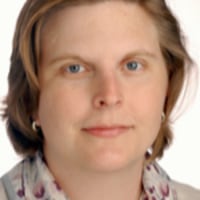Fueled by burnout, trauma, exhaustion, and the stress of working in an increasingly politicized environment, a staggering number of public health workers in Georgia have quit their jobs during the COVID-19 pandemic, with grave implications for Georgians’ health and economy.
Three years into the pandemic, the loss of workers continues, but the rate of worker departures has slowed, according to data obtained by the Atlanta Journal-Constitution and a national study released today. Despite the improvement, the loss of public health workers could further hamstring the ability of the state to respond to new and ongoing threats and meet basic duties.
An example of the impact that a shortage of health workers can have: One of DeKalb’s health clinics must be closed two days each week because four of the five nursing positions there are vacant. “That’s our biggest challenge right now: Retention. And recruitment,” said Dr. Linda O’Sullivan, the district nurse director for the Dekalb County Board of Health.
Over the past year, the Georgia Department of Public Health staff turnover rate among public health workers at health districts across the state was 28%, according to DPH data obtained by The Atlanta Journal-Constitution. That’s equivalent to more than 1 in 4 workers leaving their jobs.
Currently, the state DPH and local public health offices have about 5,260 full-time staffers, including over 900 nurses, 135 lab workers and about 40 physicians. About 450 positions now sit vacant, not including positions eliminated entirely as a result of budget cutbacks over the years.
The loss of public health workers is a problem being seen nationally, according to a study by the de Beaumont Foundation, a public health focused philanthropy based in Bethesda, Maryland. The study should ring alarm bells on funding and staffing needs nationwide, said the CEO of the Foundation, Brian Castrucci.
The study found that 46% of state and local public health employees left their jobs between 2017 and 2021.
“Imagine going into a war with China,” with nearly half of the military quitting, said Castrucci. “There would be congressional hearings. There would be a draft. But there’s never been a foreign nation that’s taken more American lives ... than COVID.”
The missing health workers leaves Georgia and other states poorly prepared to handle another pandemic or public health emergency. More immediately, basic preventive health services that public health workers provide — such as regular vaccinations, maternal care, and addiction prevention — need to be restored to pre-pandemic levels, if not increased, experts say.
Public health encompasses programs that ensure access to health care. Out of Georgia’s 159 counties, at least 66 have no pediatrician, meaning local health departments are essential to be sure children are vaccinated, according to the state Department of Public Health. Public health workers also inspect restaurants and pools, screen babies for conditions that could affect their growth and development, and record vital statistics such as births and deaths.
The de Beaumont study’s authors say the state of public health staffs is worse than following prior health emergencies such as HIV and ebola. Yet simultaneously, they say, the need to regroup and prepare for the next emergency is much greater.
“We are more vulnerable today to infectious disease than we were at the start of this COVID pandemic,” Castrucci said.
Some of the biggest losses in public health workers in Georgia have been in key roles: 625 nurses, 36 lab workers, and nine physicians left their jobs throughout the entire pandemic. An additional 462 workers categorized as health care workers, including nutritionists, medical assistants and pharmacists, have also left over the past three years.
Some of these jobs have been filled over the past three years, but not all of them. Funding for some vacant positions has run out.
As bad as it is, it was even worse in 2021 when the turnover rate reached 38% — what may have been a record-setting level of employee loss for health districts. In the year before the pandemic, the turnover rate was 21%
In an interview with The Atlanta Journal-Constitution about the loss of staff, Dr. Kathleen Toomey, the head of the Georgia Department of Public Health, talked about the demands of public health work during the pandemic.
“Public health workers are working literally day and night to protect communities, whether it’s through epidemiology and monitoring disease trends, or doing outreach for various health conditions, not just COVID, but for other health conditions. And they’ve always been doing that, but it just has never gotten this kind of visibility,” said Toomey.
The cumulative effect of working wave after wave of coronavirus outbreaks has been profound. In the fall of 2021, vaccines were widely available and hopes were high for getting the pandemic under control. But then a more dangerous coronavirus variant — delta — arrived and deaths mounted.
“We are more vulnerable today to infectious disease than we were at the start of this COVID pandemic."
“I remember going visiting districts to see the team collectively to see how the team was doing and I could tell just by looking at their faces how exhausted they were,” said Toomey.
But nothing was quite as crushing as what a health district told Toomey had happened in August 2021 at a mobile vaccination event in north Georgia. DPH nurses were giving vaccinations when a group of people showed up to protest the shots. They yelled at the workers, even throwing rocks at them. Other districts reported similar harassment at other vaccination sites.
“And it was just to me, so horrifying,” said Toomey. “That these (people) are our team working night and day in the cold, in the heat, and this is how they were greeted by some communities.”
The challenges to public health workers across the country has been well documented. According to an analysis by the CDC released in July 2022, 44% of public health workers reported considering leaving their jobs within the next five years.
O’Sullivan, the district nurse director and interim chief clinical officer of the Dekalb County Board of Health said with full staffing, her office could easily serve 2,000 more patients than they do.
In addition to burnout, she cites pay — county officials reported a starting salary for a registered nurse of $56,000 — well below what hospitals pay and less than half what some nurses could make working with temp agencies during coronavirus surges. But even with hospitals’ higher pay, they too are suffering nurse shortages brought on by pandemic burn-out.
Toomey told the AJC she believes the salary increases that were approved by Gov. Brian Kemp and the Legislature, which took effect last year, has helped slow and reverse the trendline of workers leaving.
All state employees including DPH workers got a $5,000 annual salary increase. The state also earmarked $16.3 million for additional salary increases for frontline workers, including epidemiologists, environmental health specialists and public health nurses, to make them more competitive with salaries at hospitals and the Centers for Disease Control and Prevention.
For her office, O’Sullivan is doing what the wealthier hospital chains have done: partnering with nursing schools to train students and hopefully lure them in. ”I say, ‘Imagine a life where we can keep people out of the emergency room. Just imagine a life where your community is healthy and you have people walking and running and riding their bikes when they come to visit.’”
When students hear that, she said, “You can see the light bulb come on.”
The Latest
Featured



